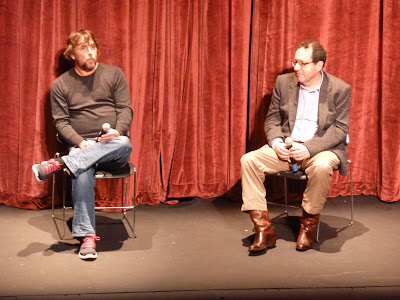CREEPSHOW (George A. Romero, 1982)
In sports it’s said that you play the game because having the best team on paper doesn’t guarantee wins. Adapting the truism for movies, you watch a film because there’s no certainty the end product will be artistically successful no matter how good the assembled talent is. CREEPSHOW boasts the director of NIGHT OF THE LIVING DEAD and DAWN OF THE DEAD and a screenplay by one of the most popular contemporary horror writers. George A. Romero and Stephen King’s key roles seemingly assure spooky fun, but the anthology film turns out to be a mediocre effort short on scares and laughs.
CREEPSHOW plays up its 1950s horror comic book inspiration by occasionally setting action within printed frames, including captions, and utilizing page turn and panel wipe transitions. In the prologue an angry father throws away his son’s horror comic, an action which he suffers for in the epilogue. The film’s five scary and comedic tales ostensibly come from the pages of this disreputable book.
In “Father’s Day” a family awaits the annual arrival of a relative who always visits her dad’s grave on the holiday when she murdered him. “The Lonesome Death of Jordy Verrill” features the titular hillbilly (King) discovering that he shouldn’t have touched the meteor that landed on his property. In “Something To Tide You Over” a vengeful husband (Leslie Nielsen) buries his wife (Gaylen Ross) and her lover (Ted Danson) up to their heads on the shore. Unleashing the terrifying contents of a hidden box from an 1834 Arctic expedition has benefits and drawbacks for two college professors (Hal Holbrook and Fritz Weaver) in “The Crate”. A ruthless businessman (E.G. Marshall) tries to eradicate the roaches invading his futuristic, supposedly germ-free penthouse in “They’re Creeping Up On You!”
Inevitably some segments will be better than others in omnibus films, but CREEPSHOW stacks the worst entries at the beginning. “Father’s Day” is essentially a long set-up for a gory punchline. “The Lonesome Death of Jordy Verrill” has a couple amusing touches, like the character’s belief that the local college has a Department of Meteors to purchase his find and a suitably sick conclusion, yet King’s hammy performance obstructs any semblance of terror in the scenario. Although “Something To Tide You Over” marks a shift toward striking the right balance between fear and dark humor, especially with shots that convey the drowning sensation, it’s padded with unmenacing scenes.
It’s not until “The Crate” that CREEPSHOW finally begins to deliver on the promise of its primary creative forces. One professor’s fantasies of killing his vulgar wife (Adrienne Barbeau) lack comedic or horrific surprise, but there is a satisfyingly grisly death when a graduate student gets a chunk bitten out of his neck by the hideous monster. Romero also sustains tension from the simple act of slowly trying to lock a crate. The segment dallies in the beginning but works overall as a thematic exploration of the darkness that lurks in the hearts of men.
CREEPSHOW largely avoids the broader social concerns in Romero’s other films until “They’re Creeping Up On You!” The story is built around a cutthroat executive whose wealth allows him to be literally sealed off from society, which isn’t exactly subtle but makes the point effectively nonetheless. More than the other entries, it taps into consistent creepiness by virtue of those nasty bugs, especially in the punctuating gross-out images.
Although the humor in CREEPSHOW often falls flat, the film’s light touch with horror offsets some of the narrative tedium and predictability. Two good stories out of five produces the kind of success rate acceptable for baseball batting averages, not movies. A Romero and King collaboration had potential, but CREEPSHOW is about as frightening as a Halloween sound effects record.
Grade: C

























